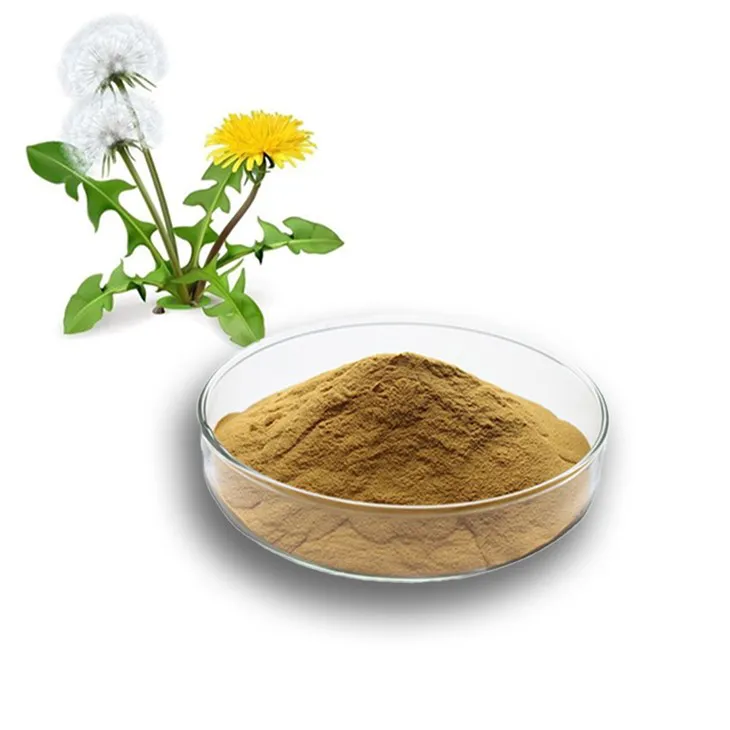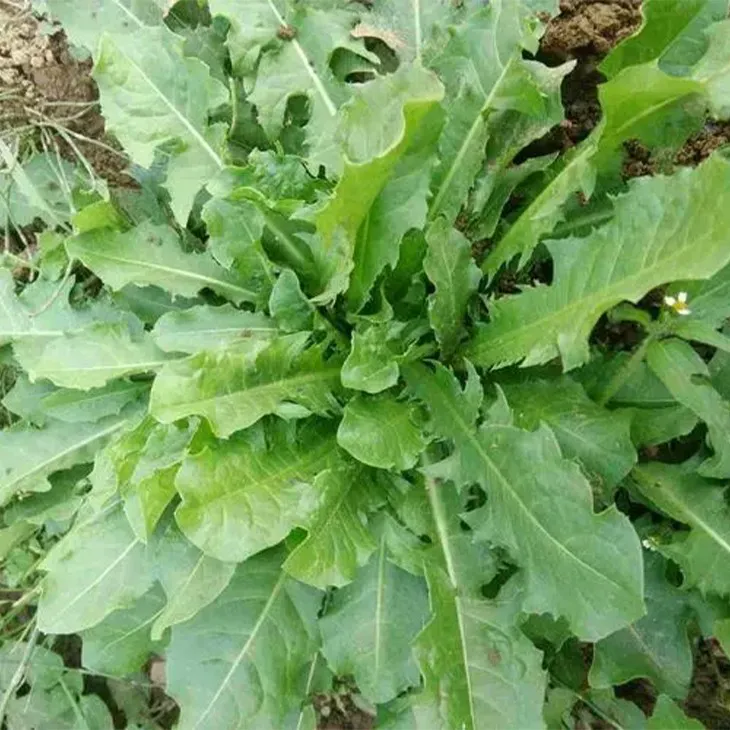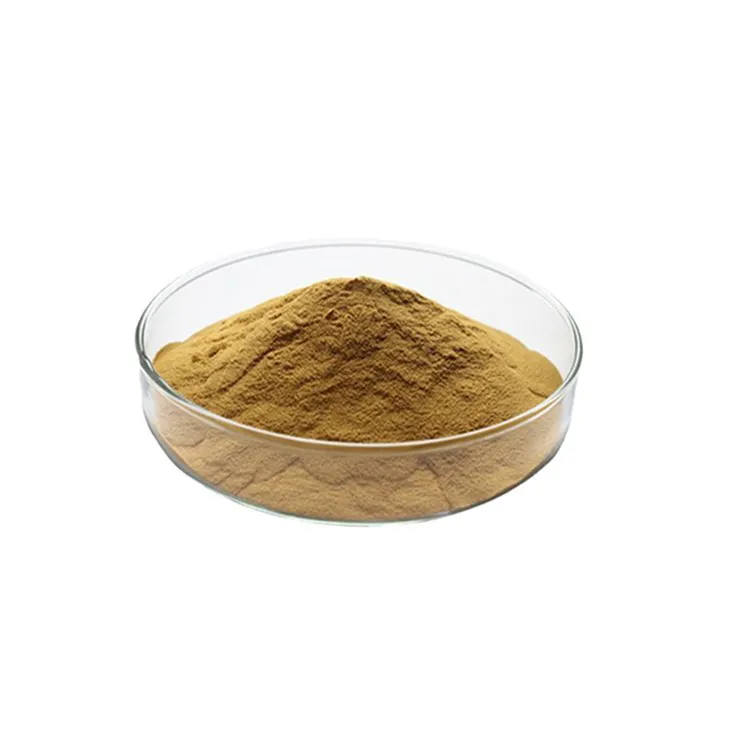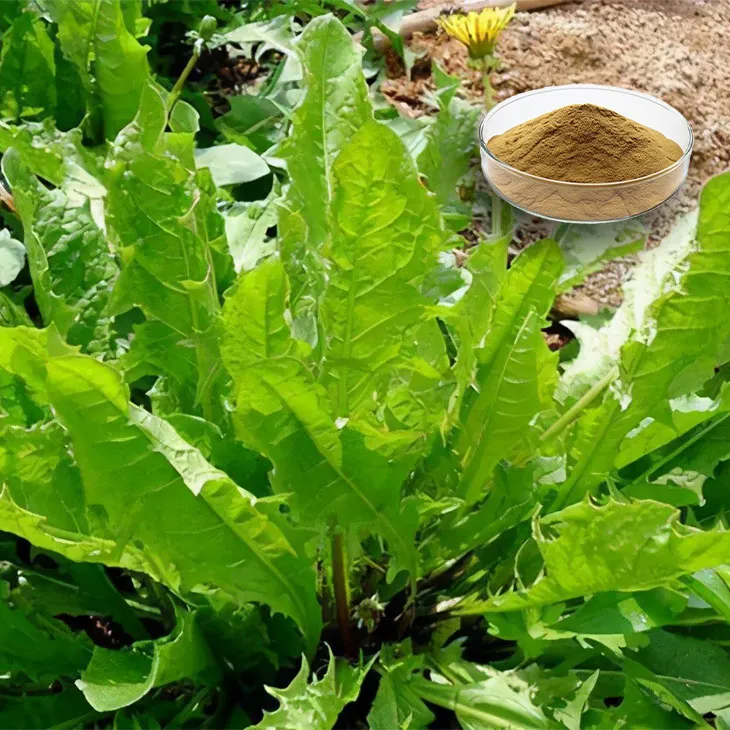- 0086-571-85302990
- sales@greenskybio.com
The process of extracting effective components from dandelion leaf in dandelion leaf extract.
2024-11-29

1. Introduction
Dandelion leaves have been recognized for their various potential health benefits due to the presence of numerous effective components. The extraction of these components from Dandelion Leaf Extract is a significant area of study. This process not only helps in isolating the beneficial substances but also in exploring their potential applications in medicine, cosmetics, and food industries.

2. Collection and Preparation of Dandelion Leaves
2.1 Selection of Dandelion Leaves
The first step in the extraction process is the careful selection of dandelion leaves. High - quality leaves are essential for obtaining a good yield of effective components. Dandelion leaves should be free from pollutants such as pesticides, heavy metals, and other contaminants. Leaves affected by diseases or pests are also not suitable for extraction. For example, leaves with signs of fungal infections or insect damage may contain abnormal metabolites that can interfere with the extraction of the desired components. Therefore, it is crucial to source the leaves from clean and unpolluted environments, such as natural meadows or well - maintained organic gardens.
2.2 Drying of Dandelion Leaves
After the selection, the dandelion leaves need to be dried to an appropriate moisture content. Drying helps in reducing the water content in the leaves, which is beneficial for subsequent extraction steps. There are several methods of drying, such as air drying and oven drying. Air drying is a natural method where the leaves are spread out in a well - ventilated area, away from direct sunlight. This method is relatively slow but can preserve the integrity of some heat - sensitive components. Oven drying, on the other hand, is a faster method. However, it requires careful control of temperature and time to avoid over - drying or damaging the leaves. The optimal moisture content after drying is usually around 10 - 15% for efficient extraction.

3. Extraction Methods
3.1 Solvent Extraction
One of the most commonly used methods for extracting effective components from dandelion leaves is solvent extraction. Solvent extraction relies on the principle that different solvents can dissolve different types of substances. Ethanol is a popular solvent for Dandelion Leaf Extraction. Ethanol has the ability to dissolve a wide range of organic compounds present in the dandelion leaves, including flavonoids, phenolic acids, and terpenes. The process involves soaking the dried dandelion leaves in ethanol for a certain period. The ratio of leaves to solvent, the temperature, and the extraction time are important factors that affect the extraction efficiency. For example, a higher ratio of solvent to leaves may result in a more complete extraction, but it also increases the cost and the amount of solvent to be recovered. A typical extraction may involve using 5 - 10 times the volume of ethanol compared to the weight of the dried leaves.
The extraction can be carried out at different temperatures. Higher temperatures generally increase the solubility of the components and can speed up the extraction process. However, excessive heat can also cause the degradation of some heat - sensitive components. Therefore, a temperature range of 40 - 60°C is often used for ethanol extraction of dandelion leaves. The extraction time can range from a few hours to several days, depending on the nature of the components to be extracted and the extraction conditions. Longer extraction times may lead to a higher yield, but it also increases the risk of extracting unwanted substances.
3.2 Other Extraction Methods
In addition to solvent extraction, there are other methods that can be used for Dandelion Leaf Extraction. Supercritical fluid extraction is an emerging technique. Supercritical carbon dioxide (scCO₂) is often used as the supercritical fluid. It has the advantages of being non - toxic, non - flammable, and having a relatively low critical temperature and pressure. This method can selectively extract different components by adjusting the pressure and temperature conditions. Another method is microwave - assisted extraction. Microwave irradiation can increase the internal temperature of the dandelion leaves rapidly, which can enhance the mass transfer rate and improve the extraction efficiency. However, these methods may require more complex equipment and higher costs compared to solvent extraction, so they are not as widely used at present.

4. Filtration
After the extraction process, the resulting mixture contains not only the dissolved effective components but also impurities such as plant debris, undissolved solids, and some soluble impurities. Filtration is carried out to remove these impurities. There are different types of filtration methods that can be used. Gravity filtration is a simple method where the extraction mixture is poured through a filter paper in a funnel under the force of gravity. This method is suitable for removing larger particles. For more efficient removal of finer impurities, vacuum filtration or membrane filtration can be used. Vacuum filtration uses a vacuum pump to create a pressure difference, which speeds up the filtration process. Membrane filtration, such as using a microporous membrane, can separate particles based on their size, allowing only the desired components and smaller molecules to pass through.

5. Concentration
Once the impurities have been removed through filtration, the next step is concentration of the extract. The purpose of concentration is to increase the proportion of the effective components in the extract. This can be achieved through various methods. Evaporation is a common method. By heating the filtered extract under reduced pressure or at a relatively low temperature, the solvent (such as ethanol) is evaporated, leaving behind a more concentrated extract. Rotary evaporators are often used for this purpose. They can control the evaporation rate and temperature effectively, preventing over - heating and degradation of the components. Another method is freeze - drying, which is especially suitable for heat - sensitive components. In freeze - drying, the extract is first frozen and then the ice is sublimated under reduced pressure, resulting in a dry and concentrated product.
6. Purification
6.1 Chromatography
To further separate and purify the desired components, purification techniques like chromatography are often involved. Chromatography is based on the differential distribution of components between a stationary phase and a mobile phase. In the case of dandelion leaf extract, different types of chromatography can be used. High - performance liquid chromatography (HPLC) is a widely used technique. It can separate components with high resolution based on their different affinities for the stationary and mobile phases. For example, flavonoids in the dandelion leaf extract can be separated from other components using HPLC. The mobile phase is usually a mixture of solvents, and the stationary phase can be a silica - based or polymer - based material. By adjusting the composition of the mobile phase and the flow rate, different components can be eluted at different times, allowing for their isolation and purification.
Another type of chromatography is column chromatography. In column chromatography, a column is filled with the stationary phase material, and the extract is loaded onto the top of the column. The mobile phase is then passed through the column, and different components are separated as they move at different rates through the column. This method is relatively simple and can be used for preparative - scale purification of components from the dandelion leaf extract.
6.2 Other Purification Methods
In addition to chromatography, there are other purification methods that can be used. Recrystallization is a method that can be used for purifying solid components. If the effective component in the dandelion leaf extract can be crystallized, by dissolving it in a suitable solvent and then allowing it to recrystallize under controlled conditions, impurities can be removed. Preparative thin - layer chromatography (PTLC) is also a useful technique. It is similar to normal thin - layer chromatography but is used for preparative purposes. Components can be separated on a thin - layer plate, and the desired bands can be scraped off and further processed to obtain pure components.
7. Conclusion
The process of extracting effective components from dandelion leaf in dandelion leaf extract involves multiple steps, from the collection and preparation of dandelion leaves to the final purification of the components. Each step is crucial in ensuring the high quality and effectiveness of the extracted components. With the development of technology, more efficient and environmentally friendly extraction and purification methods are expected to be developed in the future, which will further promote the utilization of dandelion leaf extract in various fields.
FAQ:
Question 1: Why is the selection of dandelion leaves important in the extraction process?
High - quality dandelion leaves are essential because they need to be free from pollutants and diseases. Polluted or diseased leaves may contain harmful substances or have damaged cells, which can affect the quality and quantity of the effective components to be extracted.
Question 2: What is the significance of drying the dandelion leaves?
Drying the dandelion leaves to a proper moisture content is important. It helps in preserving the leaves and also makes them more suitable for the subsequent extraction process. If the leaves have too much moisture, it can interfere with the extraction, for example, by diluting the solvents or causing spoilage during storage.
Question 3: Why is ethanol a commonly used solvent in the extraction?
Ethanol is a commonly used solvent because it can dissolve different types of effective components present in the dandelion leaves. It has appropriate polarity and chemical properties that allow it to interact with a wide range of bioactive compounds in the leaves, thus facilitating their extraction.
Question 4: How does filtration help in the extraction of effective components from dandelion leaf extract?
Filtration is carried out to remove impurities. During the extraction process, there may be various unwanted substances such as plant debris, soil particles, or undissolved matter. Filtration separates these impurities from the extract, ensuring that the final product contains mainly the desired effective components.
Question 5: What is the role of concentration in the extraction process?
Concentration is important as it increases the proportion of the effective components. After extraction, the solution may contain a relatively low concentration of the desired components. By concentrating the extract, we can reduce the volume of the solution while keeping the amount of effective components relatively constant, thereby increasing their relative proportion.
Question 6: Why is chromatography used for purification in the extraction of dandelion leaf extract?
Chromatography is used for purification because it can further separate and purify the desired components. It works based on the differential movement of components in a stationary and a mobile phase. This allows for the separation of different compounds based on their chemical and physical properties, ensuring high quality and effectiveness of the final product.
Related literature
- Analysis of Bioactive Compounds in Dandelion Leaf Extracts"
- "Optimization of the Extraction Process of Dandelion Leaf Effective Components"
- "The Chemical Composition and Biological Activities of Dandelion Leaf Extract"
- ▶ Hesperidin
- ▶ Citrus Bioflavonoids
- ▶ Plant Extract
- ▶ lycopene
- ▶ Diosmin
- ▶ Grape seed extract
- ▶ Sea buckthorn Juice Powder
- ▶ Fruit Juice Powder
- ▶ Hops Extract
- ▶ Artichoke Extract
- ▶ Mushroom extract
- ▶ Astaxanthin
- ▶ Green Tea Extract
- ▶ Curcumin
- ▶ Horse Chestnut Extract
- ▶ Other Product
- ▶ Boswellia Serrata Extract
- ▶ Resveratrol
- ▶ Marigold Extract
- ▶ Grape Leaf Extract
- ▶ New Product
- ▶ Aminolevulinic acid
- ▶ Cranberry Extract
- ▶ Red Yeast Rice
- ▶ Red Wine Extract
-
Konjac Powder
2024-11-29
-
Oyster Mushroom Extract Powder
2024-11-29
-
Artichoke Leaf Extract
2024-11-29
-
Carrageenan Extract Powder
2024-11-29
-
Chia Seed Powder
2024-11-29
-
Sea buckthorn oil
2024-11-29
-
Baicalin
2024-11-29
-
Lemon Juice Powder
2024-11-29
-
Agaricus Blazei Extract
2024-11-29
-
Grape Seed Extract
2024-11-29





















